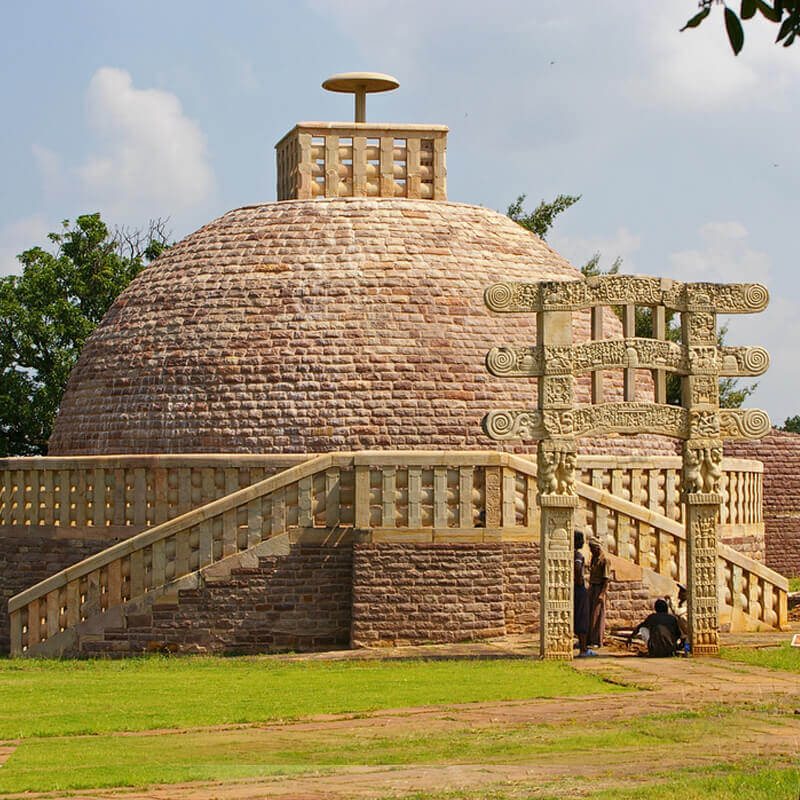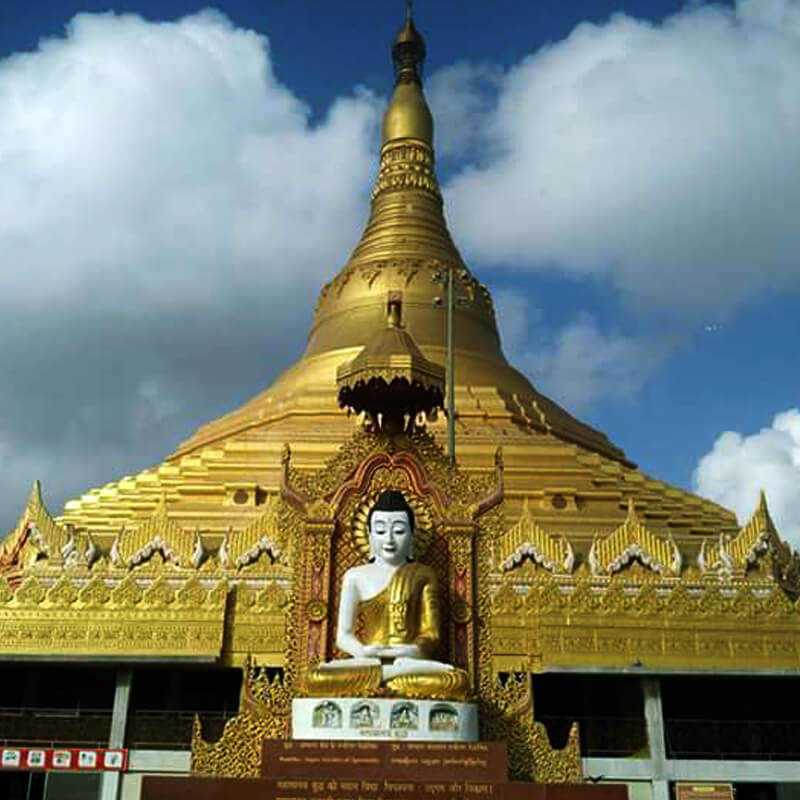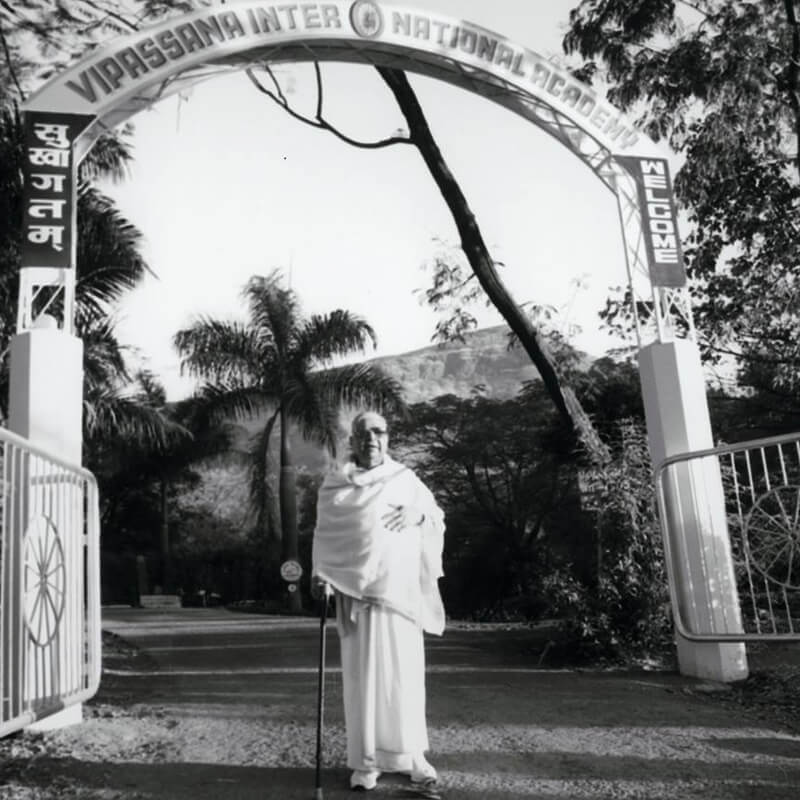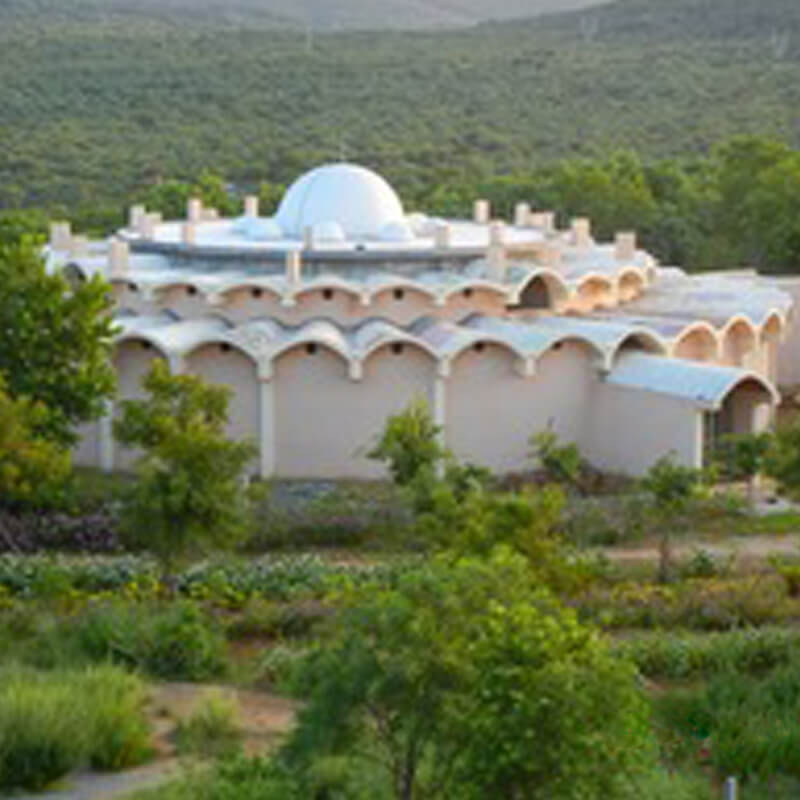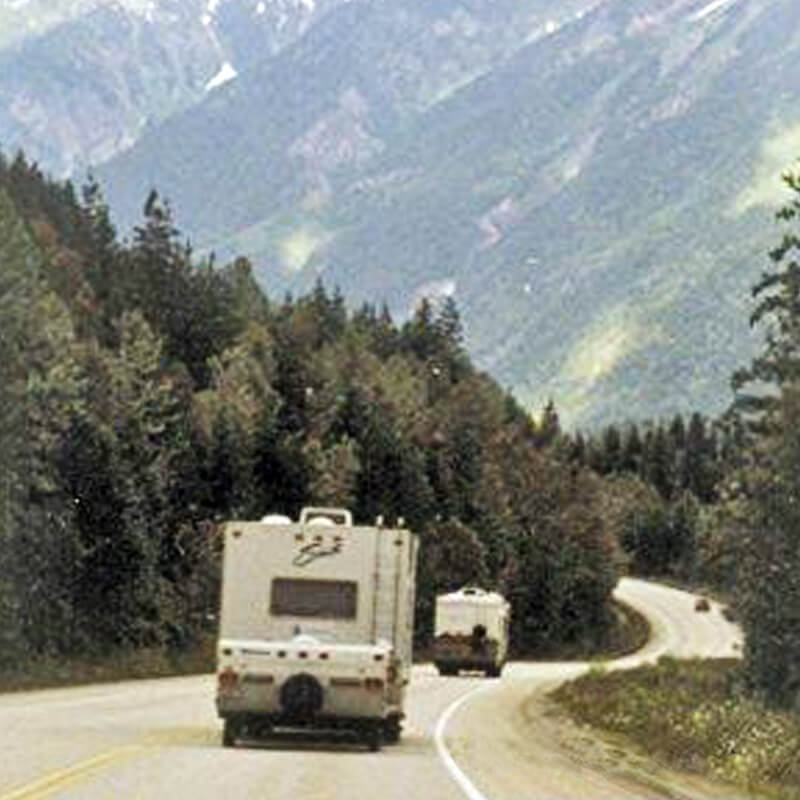Yatra started with the departure of train from Mumbai Central station at 00:30 a.m. on 18th Feb, about 1 hour behind schedule.
Day 1- Bombay
Platform 2 at Bombay Central train station is crowded with an international blend of 830 meditators. Groups who have come by bus after the long courses at Dhamma Giri meet with Bombay friends and people who have just flown in from all parts of Asia, the Middle East, North and South America, Australia and Europe. There is even one man from Nairobi in Africa. Our train journey was re-scheduled one day early by Indian Railways to adjust so that the travellers can reach Varanasi early on 19th, in order to give them a whole day at Sarnath. But due to delays, the train ultimately reached Varanasi a day late, that is, on the morning of 20th.
Goenkaji and Mataji are waiting patiently for the train to arrive. They are pleased to greet a group who have just come from Iran. Cameras flash and the Indian Zee TV cameramen record the scene. The train finally departs around midnight when all have found their bunks for the night.
Day 2 (18th Feb) - full one-day course in the train en route to Varanasi
Early morning meditation as the 17 carriages of the train pass through the countryside of Gujarat. At breakfast we remember the recent devastating earthquake(even felt in the pagoda at Dhamma Giri) and discuss the efforts of the Vipassana centres there to provide relief for the survivors.
The special speaker system pops magically into life along the length of the train and finally we hear Goenkaji announce before giving Anapana meditation instructions:
"Come let us start our meditation on wheels, the moving wheels of the vehicle of Dhamma. This pilgrimage should not be taken as a blind rite or ritual, not just by the present generation but also not by future generations.There is no blind belief involved in this - a positive and wholesome meditation - while we are moving on these wheels and visiting all the important places of the Enlightened One. Seeing where he was born, where he became enlightened, and where throughout his life he continued to guide people in Dhamma, we take advantage of the wonderful vibrations of this land, the wonderful land of India - the country of origin of pure Dhamma. May we all work seriously, seriously, seriously."
Day 3 (19th Feb) - Still on the train
The one-day course ends with sharing of merits, and Goenkaji and Mataji walk through the length of the train to chant and give metta to all the pilgrims.
Delays and re-routing mean that there is one full extra day on the train. As well as the 830 pilgrims, the train carries 130 catering and security staff, water, a kitchen with coal fuel and all ingredients for the meals. Another 100 pilgrims wait patiently in Varanasi to join the train.
Day 4 (20th Feb) - Varanasi/Sarnath
The first stop on the pilgrimage is Sarnath, just 10 km (6 miles) from the ancient city of Varanasi. There several stupas and an Asokan pillar built there in honour of the Buddha.
Day 5 (21st Feb) - The pilgrims arrive at Bodh Gaya
Notes:
At the time of the Buddha, Sarnath was called Isipatana. Five former companions of Siddhattha Gotama had been disappointed and left him when he had abandoned rigorous self mortification and fasting in favour of the middle path. They were staying at Isipatanadeer park when he gained enlightenment. He came here to convince them he had become a sammasambuddha and to teach them Vipassana. So he set the Wheel of Dhamma in motion at this place, when he gave the first discourse on the Four Noble Truths. Within a week, all five had attained the stage of Sotapana. He then gave a discourse explaining anicca, dukkha and anatta, and with further practice they all became arahants. Thus the sangha of six arahants (including the Buddha) was formed.
At this place the Buddha also taught the technique to Yasa, who became an arahant, and Yasa's family and friends, 54 of whom became arahants. So the Buddha spent his first rains retreat at Sarnath with 60 arahants, and he then instructed them to go out in many directions to teach pure Dhamma for the good and happiness of many, out of compassion for the world. So this is the place from which pure Dhamma started spreading, and there are plans to contruct the Dhamma Cakkha Vipassana centre at the deer park.
The Vipassana tour train stops at Varanasi and the pilgrims transfer by bus to Sarnath for a public talk at the Isipatthana deer park and to nearby Dhamma Cakkha for lunch and meditation. In Sarnath, Goenkaji also takes the opportunity to pay respects to the Bhikku Samdhong Rinpoche, who has attended a ten-day course and who is a close associate of the Dalai Lama. They give a joint interview for Indian Zee TV.
The tour also includes a convocation ceremony at the Central Institute of Higher Tibetan studies, where an honourary doctorate is awarded to Goenkaji. He gives an address there entitled "The Buddha and His Discovery". It begins:
"We live in an age of science and technology. It is only proper that this is also proving to be the age of the revival of the Buddha's teachings. The Buddha was the greatest scientist of mind and matter who investigated the truths about happiness and misery, about ignorance and wisdom, about bondage and liberation.
We are indeed very fortunate to have the opportunity to assemble here at the historic place where he made his discovery known to humanity. It was not to satisfy curiosity but to help suffering beings come out of their misery."
Goenkaji then explains how he learnt Vipassana in Burma (Myanmar) and his own experience of the truth through observing boily sensations. He states that "The discovery of the Buddha that the real cause of tanha (craving) lies in vedana (body sensations) is the unparalleled gift to humanity."

